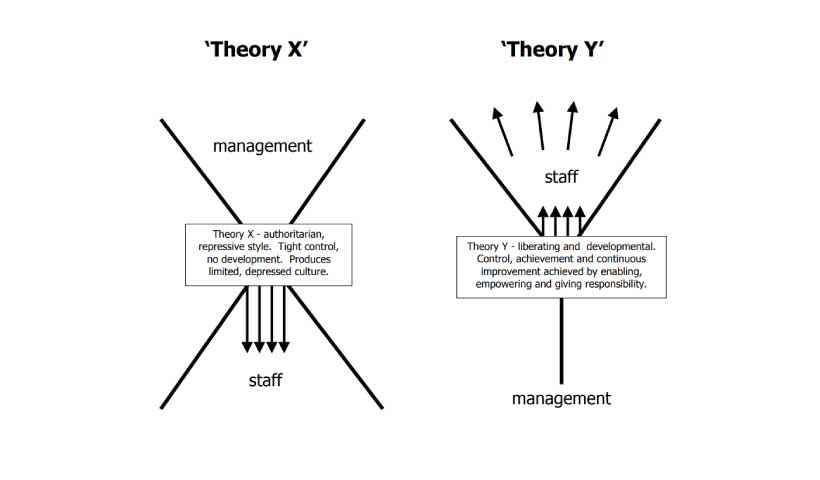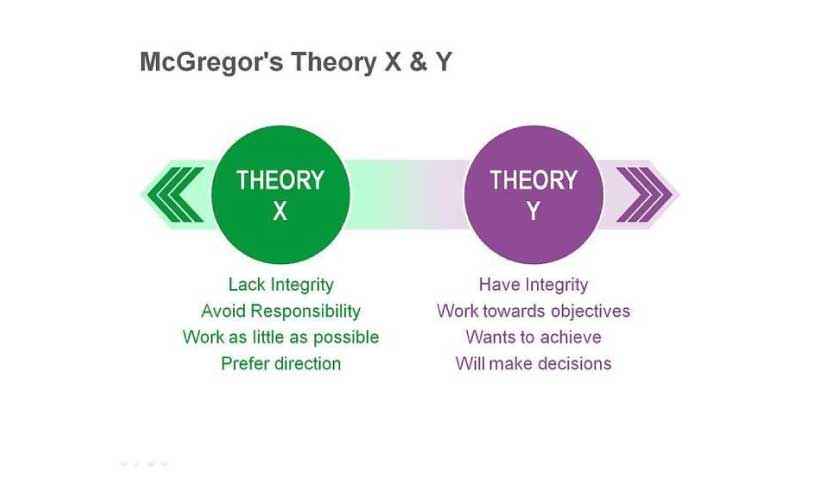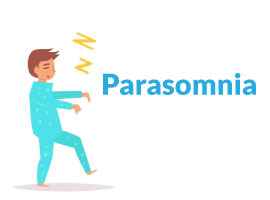Theory X and Theory Y are two contrasting management theories proposed by Douglas McGregor in his book "The Human Side of Enterprise" in 1960.
Theory X assumes that people are inherently lazy, dislike work, and need to be controlled and directed in order to be productive. According to this theory, employees need constant supervision, rewards and punishments to motivate them to work, and they will avoid responsibility whenever possible. Managers who adhere to this theory tend to be authoritarian and use a command-and-control style of leadership.
On the other hand, Theory Y assumes that people are intrinsically motivated to work, enjoy being creative and seek out responsibility. This theory suggests that employees can be trusted to work independently, and will take initiative to solve problems and improve their work. Managers who adhere to this theory tend to be more participative and use a more democratic style of leadership.
McGregor argued that managers who adopt Theory Y are more likely to create a positive work environment that encourages employee engagement, creativity, and innovation. Conversely, managers who adhere to Theory X are more likely to create a negative work environment that discourages employee motivation and satisfaction.

Advantage of theory X
While Theory X has been criticized for being overly pessimistic and outdated, it still has some potential advantages in certain situations. One advantage is that it can be effective in managing employees who are not highly skilled or experienced, or who have a history of poor performance or low motivation. In such cases, a more directive and controlling approach may be necessary to ensure that work is completed on time and to the required standard.
Additionally, Theory X can be useful in industries or contexts where safety and security are paramount, such as in the military or in high-risk manufacturing environments. In these situations, strict rules and protocols may be necessary to maintain safety and prevent accidents.
However, it is important to note that while Theory X may be effective in certain situations, it can also lead to a negative work environment that hinders employee motivation and satisfaction. Therefore, managers should carefully assess the needs and characteristics of their employees and adjust their management style accordingly.
Disadvantage of theory X
Theory X has several potential disadvantages in modern workplaces. One disadvantage is that it can lead to a negative work environment, where employees feel demotivated, disengaged, and unappreciated. When employees are treated as lazy and untrustworthy, they may become resentful and less committed to their work, which can lead to decreased productivity and increased turnover.
Another disadvantage of Theory X is that it can lead to a lack of creativity and innovation. When employees are not given the opportunity to take initiative and make decisions, they may become less invested in their work and less likely to come up with new ideas or solutions to problems. This can make it difficult for organizations to adapt to changing market conditions or to stay competitive in their industry.
Furthermore, Theory X can lead to a high degree of micromanagement, which can be time-consuming and costly for managers. When managers are constantly monitoring and controlling their employees, they may not have time to focus on other important tasks, such as strategic planning or relationship-building with clients or stakeholders.
Overall, Theory X is often seen as a outdated and ineffective approach to management that can lead to negative outcomes for both employees and organizations. It is important for managers to adopt a more positive and empowering approach, such as Theory Y, in order to create a more productive and engaged workforce.
Advantage of theory Y
Theory Y has several potential advantages over Theory X in modern workplaces. One advantage is that it encourages a more positive and empowering work environment, where employees are trusted, respected, and given autonomy to work independently. This can lead to increased motivation, job satisfaction, and creativity, as employees feel valued and appreciated for their contributions.
Another advantage is that Theory Y assumes that employees are capable of taking on more responsibility and making important decisions, which can lead to more efficient and effective decision-making. This can be especially valuable in industries that require quick responses to changing market conditions or technological developments.
Furthermore, Theory Y can lead to better communication and collaboration between managers and employees, as it promotes a more participative and democratic leadership style. This can help to foster a sense of teamwork and shared ownership of the organization's goals and objectives.
Overall, Theory Y is often seen as a more modern and progressive approach to management that can lead to a more positive work environment and better organizational outcomes.
However, it is important for managers to be aware of the specific needs and characteristics of their employees and to adjust their management style accordingly.
Disadvantage of theory Y
While Theory Y is generally considered a more positive and empowering approach to management, it also has some potential disadvantages. One disadvantage is that it may not be effective with employees who lack the necessary skills, knowledge, or experience to work independently and make important decisions. In such cases, more directive and controlling management may be necessary to ensure that work is completed correctly and efficiently.
Another disadvantage of Theory Y is that it can be difficult to implement in organizations with hierarchical structures and rigid systems of control. Managers who are used to a more authoritarian approach may find it challenging to shift to a more participative and democratic style of leadership. Additionally, employees may be resistant to change and may be skeptical of a new management approach that requires them to take on more responsibility.
Furthermore, Theory Y may not be effective in industries or contexts where safety and security are paramount, such as in the military or in high-risk manufacturing environments. In these situations, strict rules and protocols may be necessary to maintain safety and prevent accidents, and a more controlling approach may be necessary to ensure that employees follow these rules.
Overall, while Theory Y is generally considered a more positive and effective approach to management, it may not be suitable for all situations and contexts. Managers should carefully assess the needs and characteristics of their employees and organization and adjust their management style accordingly.
Conclusion:
Human reactions to environment or surrounding always do not depend on personal nature only. Leadership, work culture, group dynamics, etc. have lot of impact on human work behavior and ethics. They are many people who act in a different ways in changed situations. Sometimes same person may be defined as X group person, sometimes as Y group person. In many cases we observe both trait of X and Y in same person. So, we should follow X and Y theory as a guideline to understand people in work setting but not as the absolute truth.









